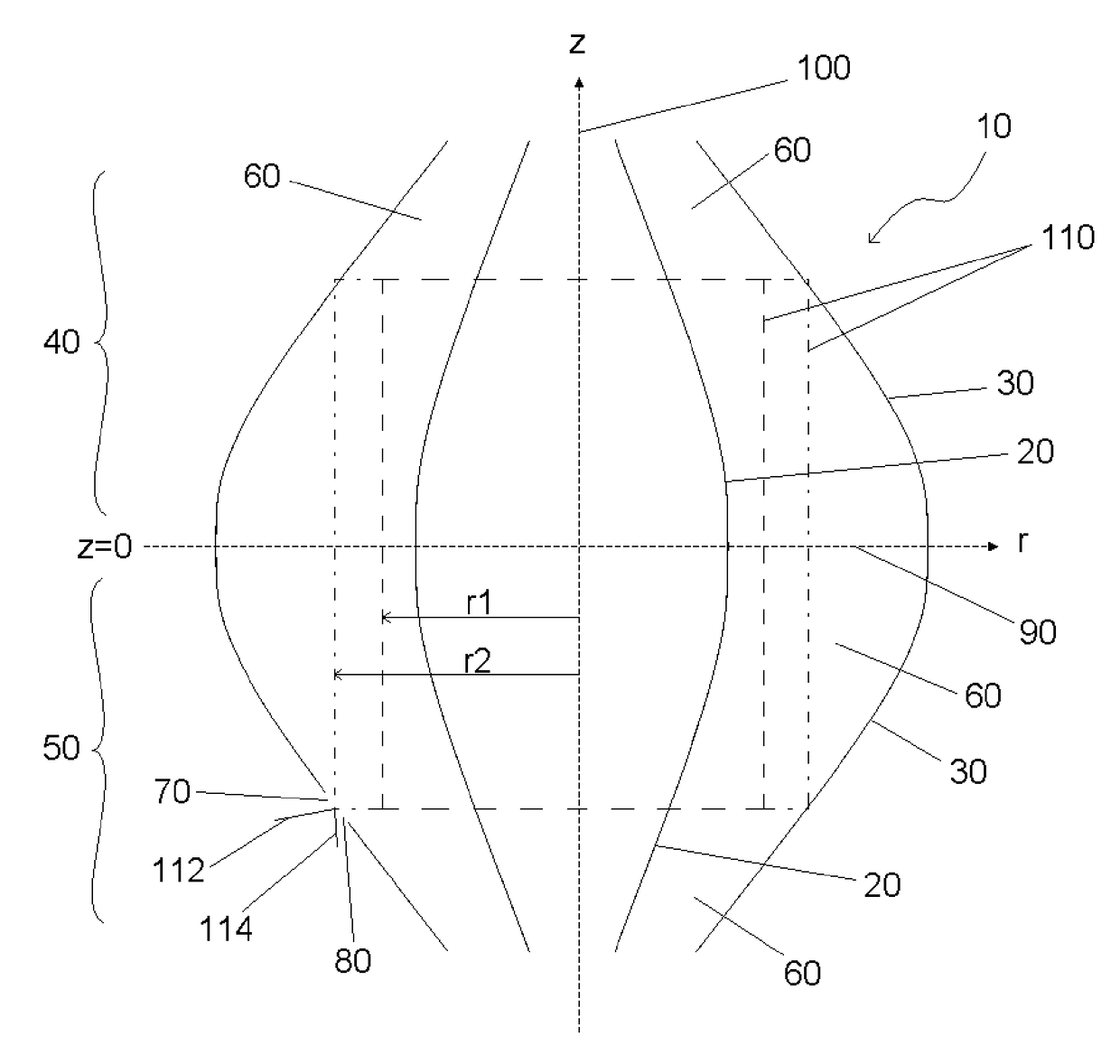Method of mass separating ions and mass separator
a separation method and separator technology, applied in separation processes, mass spectrometers, stability-of-path spectrometers, etc., can solve the problems of increasing manufacturing costs, requiring more laboratory space to house instruments, and enlarged instruments. , to achieve the effect of reducing the effect of space charg
- Summary
- Abstract
- Description
- Claims
- Application Information
AI Technical Summary
Benefits of technology
Problems solved by technology
Method used
Image
Examples
Embodiment Construction
[0132]In order to more fully understand the invention, various embodiments of the invention will now be described by way of examples only and with reference to the Figures. The embodiments described are not limiting on the scope of the invention.
[0133]One preferred embodiment of the present invention utilises the quadro-logarithmic potential distribution described by equation (1) as the main analyser field. FIG. 2 is a schematic cross sectional side view of the electrode structures for such a preferred embodiment. Analyser 10 comprises inner and outer field-defining electrode systems, 20, 30 respectively, of two opposing mirrors 40, 50. The inner and outer field-defining electrode systems in this embodiment are constructed of gold-coated glass. However, various materials may be used to construct these electrode systems: e.g. Invar; glass (zerodur, borosilicate etc) coated with metal; molybdenum; stainless steel and the like. The inner field-defining electrode system 20 is of spindle...
PUM
 Login to View More
Login to View More Abstract
Description
Claims
Application Information
 Login to View More
Login to View More - R&D
- Intellectual Property
- Life Sciences
- Materials
- Tech Scout
- Unparalleled Data Quality
- Higher Quality Content
- 60% Fewer Hallucinations
Browse by: Latest US Patents, China's latest patents, Technical Efficacy Thesaurus, Application Domain, Technology Topic, Popular Technical Reports.
© 2025 PatSnap. All rights reserved.Legal|Privacy policy|Modern Slavery Act Transparency Statement|Sitemap|About US| Contact US: help@patsnap.com



